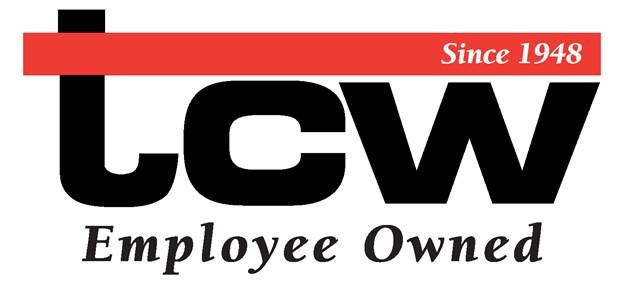Webcasts
2026 Freight Outlook: What the Data Shows and What It Means for Your Supply Chain

Partner

As 2025 closes, freight demand remains soft, and many indicators suggest the first half of 2026 may bring even slower patterns before a rebound takes shape. To help shippers plan with confidence, this session breaks down what the data is signaling and how those trends translate into real-world supply chain impacts.
Lee Klaskow, senior analyst for transportation at Bloomberg Intelligence, will unpack the economic forces shaping the 2026 outlook and the metrics that matter most. Gary Cornelius, vice president of business development at TCW, will provide the motor carrier perspective and highlight what shippers can expect from capacity, service models and carrier response as conditions shift.
Join us for a practical, data-backed look at what early 2026 may hold and how your supply chain can prepare for what is ahead.
Moderator:
Ariane Herrera, Senior Associate Editor, Special Projects, Journal of Commerce by S&P Global
Speakers:
Gary Cornelius, Vice President, Business Development, TCW
Lee Klaskow, Senior Freight Transportation & Logistics Analyst, Bloomberg Intelligence
Risk and Recalibration: The 2026 Breakbulk and Project Cargo Outlook

As 2025 drew to a close, project cargo and breakbulk freight demand remained stable, with high hopes that a positive pipeline for mining, power generation for data centers, and LNG projects would keep the market busy. But not everything in the outlook is rosy. With falling oil prices threatening to knock a revitalization of oil and petrochemical projects on the head and the long tail of tariff confusion continuing into 2026, uncertainty could drag on all-important project final investment decisions. Engineering, procurement and construction companies speaking with the Journal of Commerce anticipate a busy 2026, but whereas previous years have been laser-focused on planning, the objective now is speed, putting pressure on the supply chain. This build- it-now mentality is forcing shippers to book ship capacity further out to ensure readiness when the go button on a project is pressed. Add to this, pressures on seaborne chokepoints, congestion and that ever-present specter of geopolitics, and it stands to reason that 2026 will continue to see challenges on project timescales and punctuality.
This hourlong webcast will take a practical, data-backed look at what 2026 may hold and how your breakbulk and project cargo supply chain can prepare for what is ahead.
Moderator:
Carly Fields, Associate Editor-Breakbulk and Project Cargo, Journal of Commerce by S&P Global
Speaker(s):
Susan Oatway, Senior Research Analyst-Breakbulk and Project Cargo, Journal of Commerce by S&P Global
Interested in sponsoring this webcast? For more information, please visit: https://subscribe.joc.com/mediasolutions/
Trans-Pacific Shipping: The 2026 Outlook

Check back for description/speakers
Moderator:
Mark Szakonyi, Executive Editor, Journal of Commerce by S&P Global
Speakers - TBC
*Check back soon for more information! Interested in sponsoring this webcast? For more information, please visit: https://subscribe.joc.com/mediasolutions/
Trade Compliance: Will the Chaos of 2025 Ease in the Year Ahead?

Check back for description/speakers.
Moderator:
Eric Johnson, Senior Editor-Technology, Journal of Commerce by S&P Global
Speaker(s): TBC
*Check back soon for more information! Interested in sponsoring this webcast? For more information, please visit: https://subscribe.joc.com/mediasolutions/
Breakbulk and Project Cargo Market Report

Check back for description/speakers
Moderator:
Carly Fields, Associate Editor-Breakbulk and Project Cargo, Journal of Commerce by S&P Global
Speaker(s):
Susan Oatway, Senior Research Analyst-Breakbulk and Project Cargo, Journal of Commerce by S&P Global
*Check back soon for more information! Interested in sponsoring this webcast? For more information, please visit: https://subscribe.joc.com/mediasolutions/
Trucking Market Report: First-Quarter Review and Outlook

Check back for description/speakers
Moderator:
William Cassidy, Senior Editor-Trucking and Domestic Transportation, Journal of Commerce by S&P Global
Speakers - TBC
*Check back soon for more information! Interested in sponsoring this webcast? For more information, please visit: https://subscribe.joc.com/mediasolutions/
Container Shipping Outlook: The Asia-Europe Trade

Moderator:
Greg Knowler, Europe Editor, Journal of Commerce by S&P Global
Speakers - TBC
*Check back soon for more information! Interested in sponsoring this webcast? For more information, please visit: https://subscribe.joc.com/mediasolutions/
Technology and the Fight Against Cargo Theft: A TPM Tech Webcast

Check back for description/speakers
Moderator:
Eric Johnson, Senior Editor-Technology, Journal of Commerce by S&P Global
Speakers - TBC
*Check back soon for more information! Interested in sponsoring this webcast? For more information, please visit: https://subscribe.joc.com/mediasolutions/
Canada Trade and Shipping Outlook

Check back for description/speakers
Moderator:
Mark Szakonyi, Executive Editor, Journal of Commerce by S&P Global
Speakers - TBC
*Check back soon for more information! Interested in sponsoring this webcast? For more information, please visit: https://subscribe.joc.com/mediasolutions/
Midyear Intermodal Market Report

Check back for description/speakers
Moderator:
Ari Ashe, Senior Editor-Intermodal Rail, Journal of Commerce by S&P Global
Speakers - TBC
*Check back soon for more information! Interested in sponsoring this webcast? For more information, please visit: https://subscribe.joc.com/mediasolutions/
The JOC Top 100 Importers and Exporters: Analyzing the Rankings and Second-Half Trade Outlook

Check back for description/speakers
Moderator:
Eric Johnson, Senior Editor, Technology, Journal of Commerce by S&P Global
Speakers - TBC
*Check back soon for more information! Interested in sponsoring this webcast? For more information, please visit: https://subscribe.joc.com/mediasolutions/
Midyear Container Shipping Report: Analyzing the Peak Season

Partner:

Check back for description/speakers
Moderator:
Mark Szakonyi, Executive Editor, Journal of Commerce by S&P Global
Speakers - TBC
*Check back soon for more information! Interested in sponsoring this webcast? For more information, please visit: https://subscribe.joc.com/mediasolutions/
Midyear Trucking Market Report: Analyzing the Second-Half Outlook

Check back for description/speakers
Moderator:
William Cassidy, Senior Editor-Trucking and Domestic Transportation, Journal of Commerce by S&P Global
Speakers - TBC
*Check back soon for more information! Interested in sponsoring this webcast? For more information, please visit: https://subscribe.joc.com/mediasolutions/
Global Trade, Geopolitics and the Impact on Refrigerated Shipping: A TPM Cold Chain Webcast

Check back for description/speakers
Moderator:
Laura Robb, Associate Editor-Americas Container Market, Journal of Commerce by S&P Global
Speakers - TBC
*Check back soon for more information! Interested in sponsoring this webcast? For more information, please visit: https://subscribe.joc.com/mediasolutions/
European Shipping and Trade Outlook: The Trans-Atlantic

Check back for description/speakers
Moderator:
Greg Knowler, Europe Editor, Journal of Commerce by S&P Global
Speakers - TBC
*Check back soon for more information! Interested in sponsoring this webcast? For more information, please visit: https://subscribe.joc.com/mediasolutions/
Breakbulk and Project Cargo Market Report: Fourth-Quarter Outlook

Check back for description/speakers
Moderator:
Carly Fields, Associate Editor-Breakbulk and Project Cargo, Journal of Commerce by S&P Global
Speakers - TBC
*Check back soon for more information! Interested in sponsoring this webcast? For more information, please visit: https://subscribe.joc.com/mediasolutions/
Finding Efficiency and Savings Amid the Turmoil--How Technology Can and Is Helping Shippers: A TPM Tech Webcast

Check back for description/speakers
Moderator:
Eric Johnson, Senior Editor, Technology, Journal of Commerce by S&P Global
Speakers - TBC
*Check back soon for more information! Interested in sponsoring this webcast? For more information, please visit: https://subscribe.joc.com/mediasolutions/
Fourth-Quarter Trucking Report: Analyzing the Peak Season

Check back for description/speakers
Moderator:
William Cassidy, Senior Editor-Trucking and Domestic Transportation, Journal of Commerce by S&P Global
Speakers - TBC
*Check back soon for more information! Interested in sponsoring this webcast? For more information, please visit: https://subscribe.joc.com/mediasolutions/
2026 Reefer Review and Outlook: A TPM Cold Chain Webcast

Check back for description/speakers
Moderator:
Laura Robb, Associate Editor-Americas Container Markets, Journal of Commerce by S&P Global
Speakers - TBC
*Check back soon for more information! Interested in sponsoring this webcast? For more information, please visit: https://subscribe.joc.com/mediasolutions/
Global Shipping Report: Analyzing the 2027 Outlook

Check back for description/speakers
Moderator:
Mark Szakonyi, Executive Editor, Journal of Commerce by S&P Global
Speakers - TBC
*Check back soon for more information! Interested in sponsoring this webcast? For more information, please visit: https://subscribe.joc.com/mediasolutions/
Port Performance and the State of North American Cargo Flow

Check back for description/speakers
Moderator:
Bill Mongelluzzo, Senior Editor-West Coast, Journal of Commerce by S&P Global
Speaker(s) - TBC
*Check back soon for more information! Interested in sponsoring this webcast? For more information, please visit: https://subscribe.joc.com/mediasolutions/
Recent News and Analysis
Maritime News
- Trump administration suspends wind energy projects over ‘national security’ threat
- Service-related issues to take center stage in 2026–27 ocean contract talks: sources
- DHL, CMA CGM unveil emissions-cutting biofuel collaboration
- Ocean service quality ‘under siege’ as pricing shifts in favor of shippers
- Carriers plan rate hikes, revamp services on Asia-Latin America trade
Surface News
- Carriers, POLA back UP-NS deal, citing lower transit times, costs
- UP, in merger filing, vows to convert millions of loads to intermodal annually
- Geodis inks takeover deal to expand French trucking coverage
- Two large rail unions say they oppose planned UP-NS merger
- Impact of non-domiciled CDL enforcement splits US trucking sector
Air Cargo News
- Rising US air freight imports from Taiwan, Vietnam offset drop in China trade
- US freight industry enters 2026 with low growth expectations
- Black Friday demand tightens trans-Pacific air cargo capacity, elevates rates
- DHL Global Forwarding sees Q3 revenue drop on lower ocean rates
- Belly freight shouldering airlines’ CO2 emissions burden: forwarders
Supply Chain News
- Revenue from low-value shipment duties crosses $1 billion mark: CBP
- Big US ports ask Congress to ensure fair funding for dredging
- Freightos founder to step down as CEO as company moves into ‘next phase’
- House reauthorizes FMC and adds to its oversight powers
- US freight industry enters 2026 with low growth expectations

